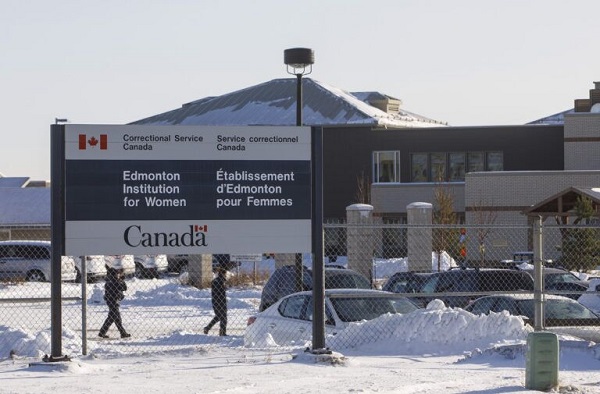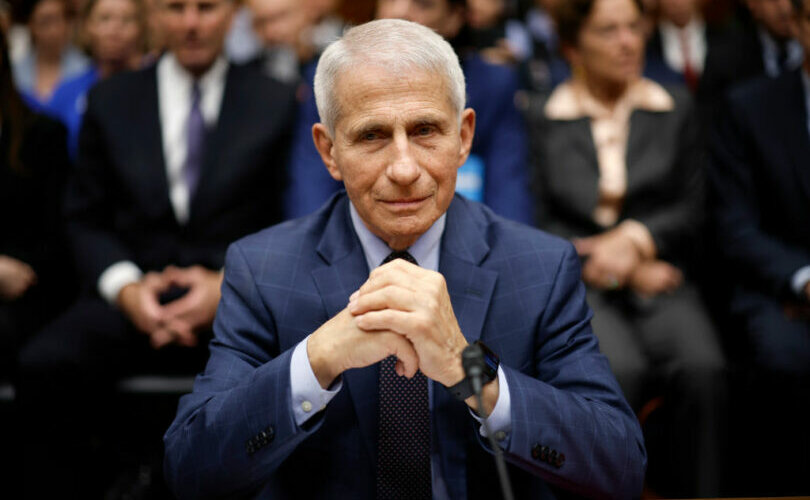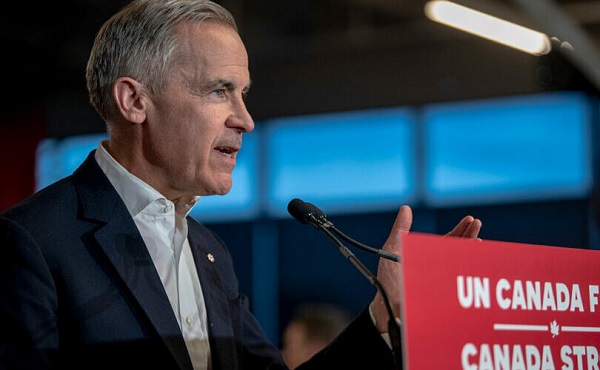Alberta
Suter’s shootout winner lifts Red Wings past Oilers for fourth straight victory

Detroit Red Wings’ Pius Suter (24) and Edmonton Oilers’ Ryan Nugent-Hopkins (93) battle for the puck during second period NHL action in Edmonton on Wednesday, February 15, 2023.THE CANADIAN PRESS/Jason Franson
By Shane Jones in Edmonton
Pius Suter scored the shootout winner as the Detroit Red Wings kept up their second-half surge with a 5-4 victory over the Edmonton Oilers on Wednesday.
Dylan Larkin, Moritz Seider, Robby Fabbri and Olli Maatta scored for the Red Wings (25-20-8), who have now won four straight.
Ville Husso made 41 saves between regulation and overtime.
Ryan Nugent-Hopkins had a pair of goals and Leon Draisaitl and Derek Ryan also replied for the Oilers (30-19-6), who have dropped two in a row.
Jack Campbell stopped 19-of-23 shots leading up to the shootout.
Detroit opened the scoring 4:17 into the first period on the power play as Larkin snuck a short-side shot past Campbell to extend his goal streak to four games. He has six goals across the stretch and 21 on the season.
The Red Wings added a bizarre goal at 17:19 when Seider sent a backhand shot from the corner towards the net and it caromed off defenceman Philip Broberg, the post, and then Campbell before going in.
Edmonton had no luck in the opening frame as Darnell Nurse and Klim Kostin both hit the posts.
Nugent-Hopkins got the Oilers on the board 1:26 into the second period when he ripped a wrist shot past Husso.
Fabbri restored Detroit’s two-goal edge on the power play when he creeped in from the point and beat Campbell clean to the far side at 9:06.
Edmonton made it a one-goal game just over two minutes later as Connor McDavid sent a one-handed pass across the crease to Nugent-Hopkins, who recorded his 26th goal of the season in his 55th game. Nugent-Hopkins’s career best is 28 goals in 82 games in 2018-2019.
Maatta made it 4-2 with 3:48 to play in the second, scoring his fifth goal of the season on a point blast off the faceoff.
The Oilers power play went to work 3:26 into the third period as Draisaitl put all his weight behind a one-timer to score his 31st.
Edmonton pulled even a couple of minutes later as a long Kostin shot was deftly tipped past Husso by Ryan into the net, eventually sending the game to overtime.
NOTES
The Oilers were forced to deviate from their recent practice of dressing seven defencemen and 11 forwards when blue-liner Vincent Desharnais was unable to dress due to illness. Also out for Edmonton was Kailer Yamamoto, who is ready to return but can’t be added to the lineup at the moment due to salary cap concerns, and Ryan Murray (back). … Missing for Detroit was Lucas Raymond (lower body) and Jake Walman (upper body) … Larkin is averaging a career-high 0.98 pints per game this season and is on pace for a career-high 79 points (32 goals, 48 assists) this season, and if he keeps it up would be the first Red Wings player with back-to-back 30-goal seasons since Pavel Datsyuk and Henrik Zetterberg both did so in 2007-08 and 2008-09.
UP NEXT
The Red Wings are right back at it on Thursday as they take on the Calgary Flames in the third game of a five-game trip. The Oilers play host to the New York Rangers on Friday.
This report by The Canadian Press was first published Feb. 15, 2023.
Alberta
Alberta takes big step towards shorter wait times and higher quality health care

From the Fraser Institute
On Monday, the Smith government announced that beginning next year it will change the way it funds surgeries in Alberta. This is a big step towards unlocking the ability of Alberta’s health-care system to provide more, better and faster services for the same or possibly fewer dollars.
To understand the significance of this change, you must understand the consequences of the current (and outdated) approach.
Currently, the Alberta government pays a lump sum of money to hospitals each year. Consequently, hospitals perceive patients as a drain on their budgets. From the hospital’s perspective, there’s little financial incentive to serve more patients, operate more efficiently and provide superior quality services.
Consider what would happen if your local grocery store received a giant bag of money each year to feed people. The number of items would quickly decline to whatever was most convenient for the store to provide. (Have a favourite cereal? Too bad.) Store hours would become less convenient for customers, alongside a general decline in overall service. This type of grocery store, like an Alberta hospital, is actually financially better off (that is, it saves money) if you go elsewhere.
The Smith government plans to flip this entire system on its head, to the benefit of patients and taxpayers. Instead of handing out bags of money each year to providers, the new system—known as “activity-based funding”—will pay health-care providers for each patient they treat, based on the patient’s particular condition and important factors that may add complexity or cost to their care.
This turns patients from a drain on budgets into a source of additional revenue. The result, as has been demonstrated in other universal health-care systems worldwide, is more services delivered using existing health-care infrastructure, lower wait times, improved quality of care, improved access to medical technologies, and less waste.
In other words, Albertans will receive far better value from their health-care system, which is currently among the most expensive in the world. And relief can’t come soon enough—for example, last year in Alberta the median wait time for orthopedic surgeries including hip and knee replacements was 66.8 weeks.
The naysayers argue this approach will undermine the province’s universal system and hurt patients. But by allowing a spectrum of providers to compete for the delivery of quality care, Alberta will follow the lead of other more successful universal health-care systems in countries such as Australia, Germany, the Netherlands and Switzerland and create greater accountability for hospitals and other health-care providers. Taxpayers will get a much better picture of what they’re paying for and how much they pay.
Again, Alberta is not exploring an untested policy. Almost every other developed country with universal health care uses some form of “activity-based funding” for hospital and surgical care. And remember, we already spend more on health care than our counterparts in nearly all of these countries yet endure longer wait times and poorer access to services generally, in part because of how we pay for surgical care.
While the devil is always in the details, and while it’s still possible for the Alberta government to get this wrong, Monday’s announcement is a big step in the right direction. A funding model that puts patients first will get Albertans more of the high-quality health care they already pay for in a timelier fashion. And provide to other provinces an example of bold health-care reform.
Alberta
Alberta’s embrace of activity-based funding is great news for patients

 From the Montreal Economic Institute
From the Montreal Economic Institute
Alberta’s move to fund acute care services through activity-based funding follows best practices internationally, points out an MEI researcher following an announcement made by Premier Danielle Smith earlier today.
“For too long, the way hospitals were funded in Alberta incentivized treating fewer patients, contributing to our long wait times,” explains Krystle Wittevrongel, director of research at the MEI. “International experience has shown that, with the proper funding models in place, health systems become more efficient to the benefit of patients.”
Currently, Alberta’s hospitals are financed under a system called “global budgeting.” This involves allocating a pre-set amount of funding to pay for a specific number of services based on previous years’ budgets.
Under the government’s newly proposed funding system, hospitals receive a fixed payment for each treatment delivered.
An Economic Note published by the MEI last year showed that Quebec’s gradual adoption of activity-based funding led to higher productivity and lower costs in the province’s health system.
Notably, the province observed that the per-procedure cost of MRIs fell by four per cent as the number of procedures performed increased by 22 per cent.
In the radiology and oncology sector, it observed productivity increases of 26 per cent while procedure costs decreased by seven per cent.
“Being able to perform more surgeries, at lower costs, and within shorter timelines is exactly what Alberta’s patients need, and Premier Smith understands that,” continued Mrs. Wittevrongel. “Today’s announcement is a good first step, and we look forward to seeing a successful roll-out once appropriate funding levels per procedure are set.”
The governments expects to roll-out this new funding model for select procedures starting in 2026.
* * *
The MEI is an independent public policy think tank with offices in Montreal, Ottawa, and Calgary. Through its publications, media appearances, and advisory services to policymakers, the MEI stimulates public policy debate and reforms based on sound economics and entrepreneurship.
-

 2025 Federal Election1 day ago
2025 Federal Election1 day agoRCMP memo warns of Chinese interference on Canadian university campuses to affect election
-

 2025 Federal Election1 day ago
2025 Federal Election1 day agoResearchers Link China’s Intelligence and Elite Influence Arms to B.C. Government, Liberal Party, and Trudeau-Appointed Senator
-

 MAiD2 days ago
MAiD2 days agoDisability rights panel calls out Canada, US states pushing euthanasia on sick patients
-

 Justice2 days ago
Justice2 days agoCanadian government sued for forcing women to share spaces with ‘transgender’ male prisoners
-

 Alberta2 days ago
Alberta2 days agoAlberta takes big step towards shorter wait times and higher quality health care
-

 Energy2 days ago
Energy2 days agoTrump signs four executive orders promoting coal industry
-

 COVID-1923 hours ago
COVID-1923 hours agoFauci, top COVID officials have criminal referral requests filed against them in 7 states
-

 2025 Federal Election23 hours ago
2025 Federal Election23 hours agoMark Carney vows to provide sterilizing puberty blockers to children ‘without exception’










